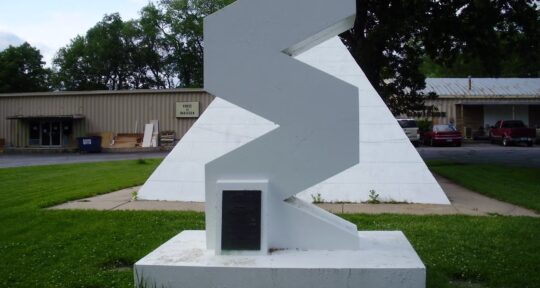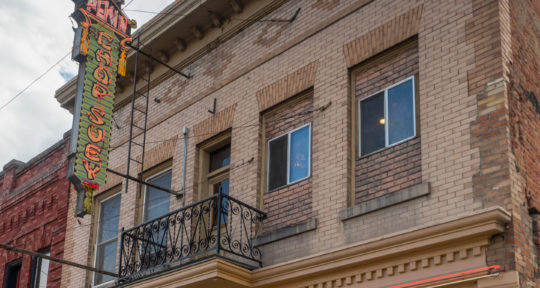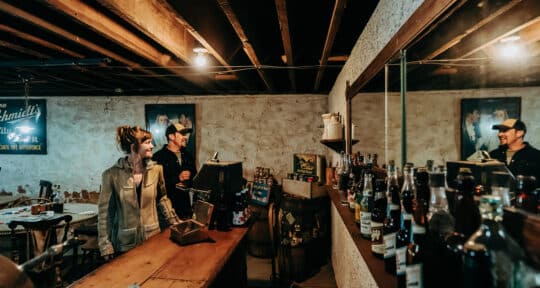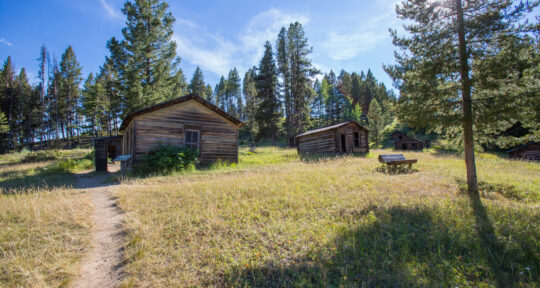Visitors flock to the Central Coast of California for many reasons, including the stunning coastline, local wineries, and the opulent Hearst Castle. But nestled among million-dollar homes in the residential hills of Cambria, a small coastal town located along Highway 1, sits a roadside attraction that has locals divided. Depending on who you ask, Nitt Witt Ridge is either an eyesore or a cherished part of the neighborhood’s history. Since 1981 it’s also a California Historical Landmark—which means it’s not going anywhere.
Often referred to as either the “poor man’s Hearst Castle” or the “anti-Hearst Castle,” the three-level house has seen better days. Arthur “Art” Harold Beal, an eccentric artist who was known locally as Captain Nitt Witt, bought the 2.5-acre lot on Hillcrest Drive for $500 in 1928. He then proceeded to hollow out the hillside with a pickaxe and shovel and spend the next 50 years building his bizarre mansion.
A trash hauler by trade, Beal believed in collecting and repurposing everything from nails and screws to old toilets and beer cans. Consequently, he built his house using found objects—including, allegedly, some materials scavenged from the construction of Hearst Castle.

Meeting O’Malley
As I’m making my way up the twists and turns of Hillcrest Drive, surrounded on both sides by lush greenery, I worry that I won’t be able to spot Nitt Witt Ridge among all the trees. But the house is impossible to miss. Perched on a steep hillside, Beal’s masterpiece is rickety—but also, somehow, majestic. The exterior of each floor is painted a different color and built with a variety of materials. Rocks, abalone shells, and tires are common elements of the architecture. And there are toilets everywhere.
I park in front of the house, which is separated from the street by a chain-link fence, and wait by a gate with a sign informing me that the next tour will start at 4 p.m. While I wait, a laminated piece of paper attached to the fence provides some background information about the house and its creator. At the bottom is a curious paragraph: “In this day and age of acceptance of so many things that weren’t so easily accepted just a decade ago, please take a moment to not pass such quick judgment onto Nit Wit Ridge, a mere building, or its Owner/Guide, Michael O’Malley.”
O’Malley and his wife Stacey bought the house in 1999. They never intended to live in it—and, in fact, they wouldn’t have been able to, even if the house was in better shape, since it lacks water rights. The water meter was sold a few years before they purchased the house in order to pay for back taxes.
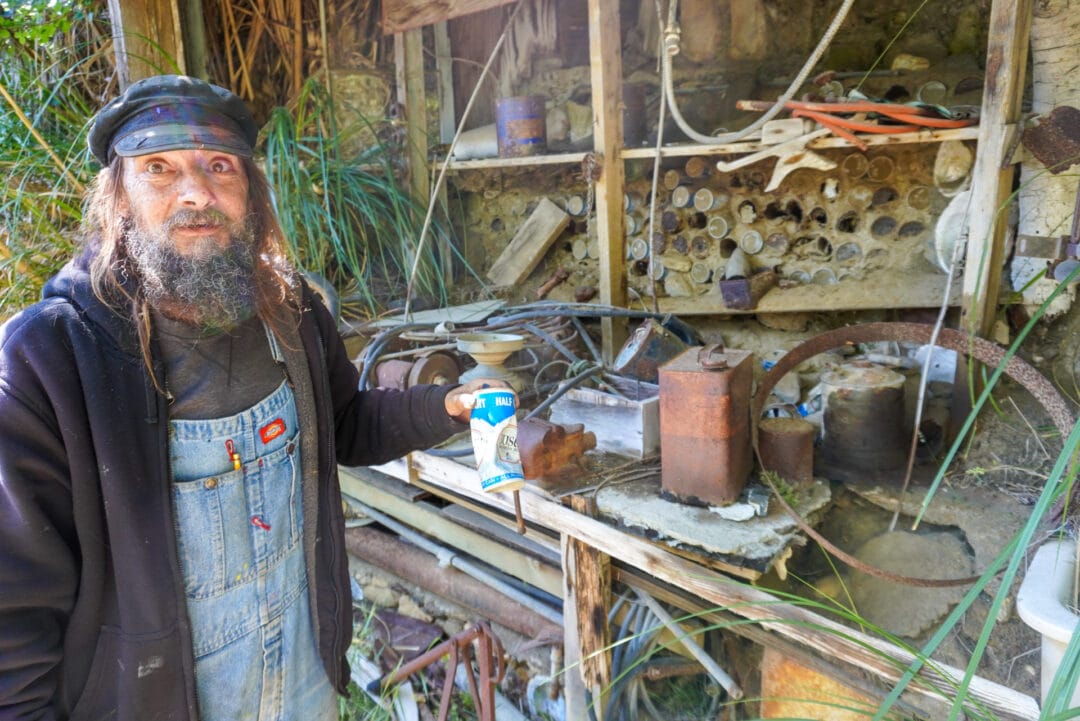
At 4 o’clock, O’Malley himself comes down the stairs and opens the gate. My friend and I are the only people waiting, so we get a private tour. The note on the fence about not passing judgment suddenly makes a lot more sense. Michael O’Malley is a small-framed man. He is dressed in stained denim overalls with big holes in the rear end. His face is framed by a wiry, graying beard and long, stringy hair. His eyes are expressive and intense. In fact, he reminds me of Beal, who I’ve seen in photos and video clips.
But when he opens his mouth, O’Malley is soft spoken and knowledgeable, and it’s instantly clear that he genuinely loves the property.
A sense of humor
As we’re walking up the stairs on one side of the house, O’Malley points out different building materials and features. Pillars holding up the house are made with tire rims and concrete. “It’s stronger than it looks,” he says. He brings up a 2003 earthquake with a magnitude of 6.6. O’Malley was inside Nitt Witt Ridge when it struck only a few miles away.
“I had two people on a tour. We were inside this place, the top level, during the earthquake. We ran out of here real fast. I thought half the place would be gone. But it surprised me, nothing happened to it in the earthquake,” he says. “All this damage, that’s done from regular erosion.”
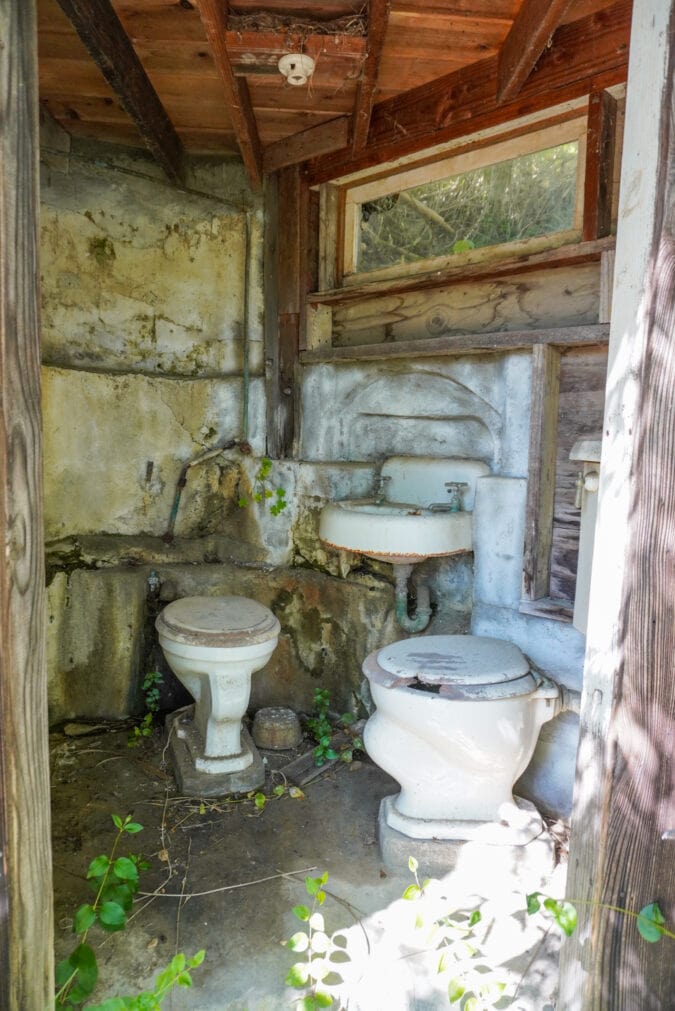
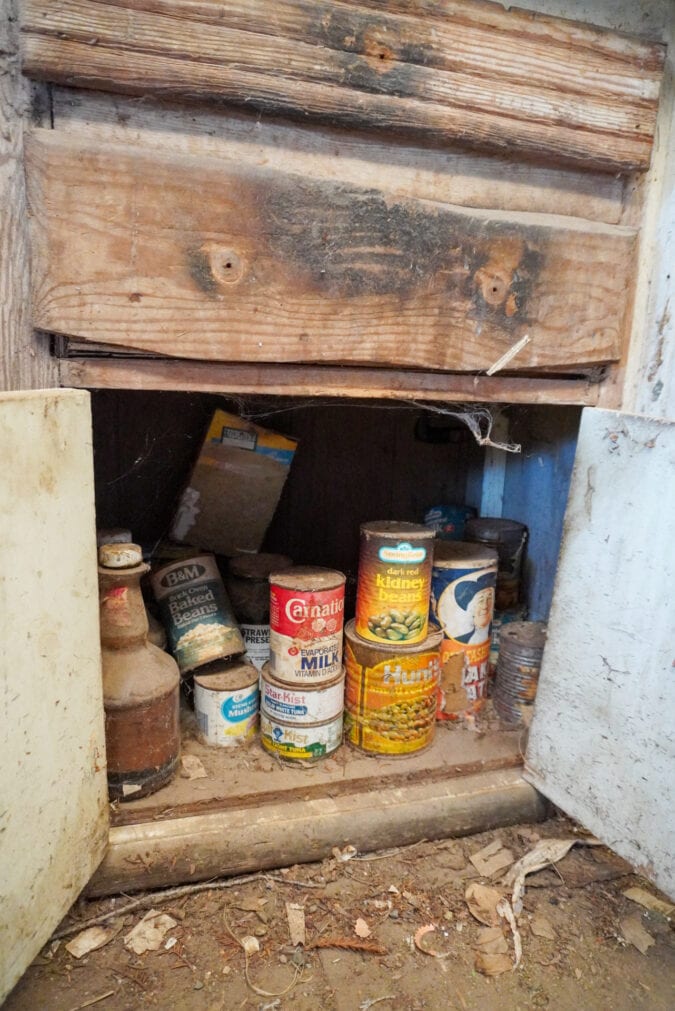
O’Malley takes us through the rooms of the house one by one, and the spirit of Beal is present throughout. Minus the dirt and deterioration, it’s almost like he never left. His clothes still hang in the closets, cans of food—baked beans, tuna, evaporated milk—still collect dust in kitchen cabinets, and drawers are full of newspaper clippings and other personal items. And then there are the toilets.
“By the way he was building this place, it seems like he probably would’ve had a pretty good sense of humor,” O’Malley says of Beal. “He built quite a few jokes throughout the property.”
Lifting the lids of a couple of toilet seats mounted to the wall reveals that the seats are actually picture frames. The outhouse has two toilets facing each other. O’Malley calls them “his-and-hers toilets,” even though Beal was never married. And on the roof of the house, overlooking the street and the view beyond it, is perhaps the most glorious commode of all. Covered in pieces of glass and mirror, it glitters in the California sun. O’Malley says that Beal used to sit up here, wearing nothing but a robe, and greet passersby. Based on everything I’ve learned about the eccentric man who built this house, it makes complete sense—a sparkly toilet is the perfect throne for Beal, a garbage king with a castle of trash.

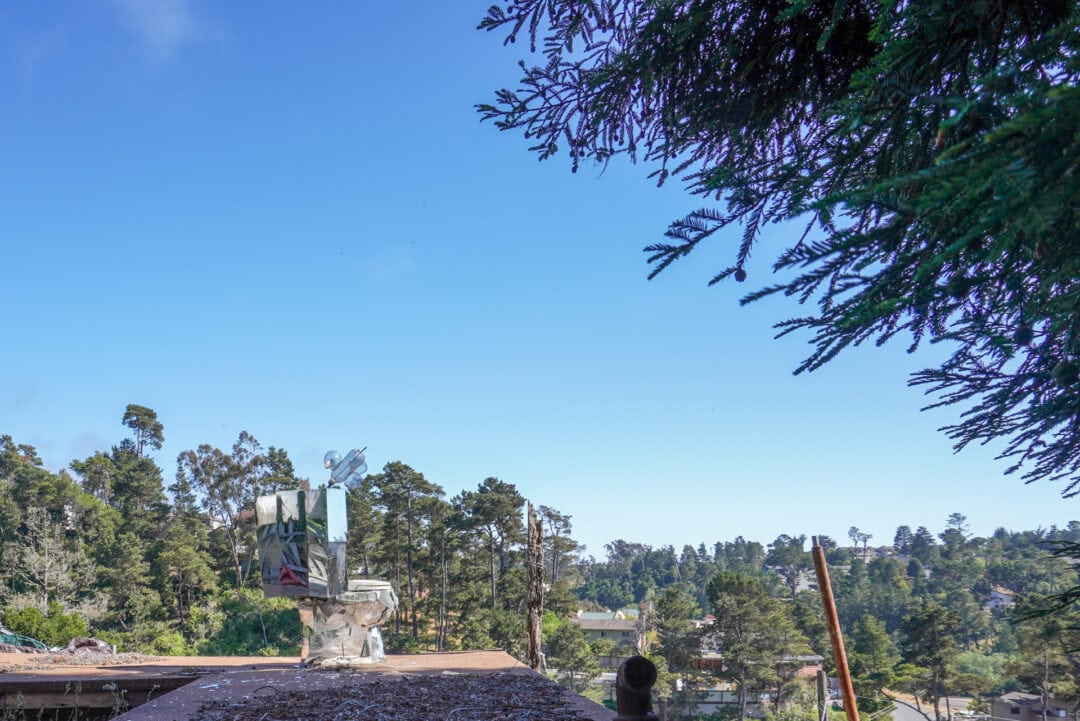
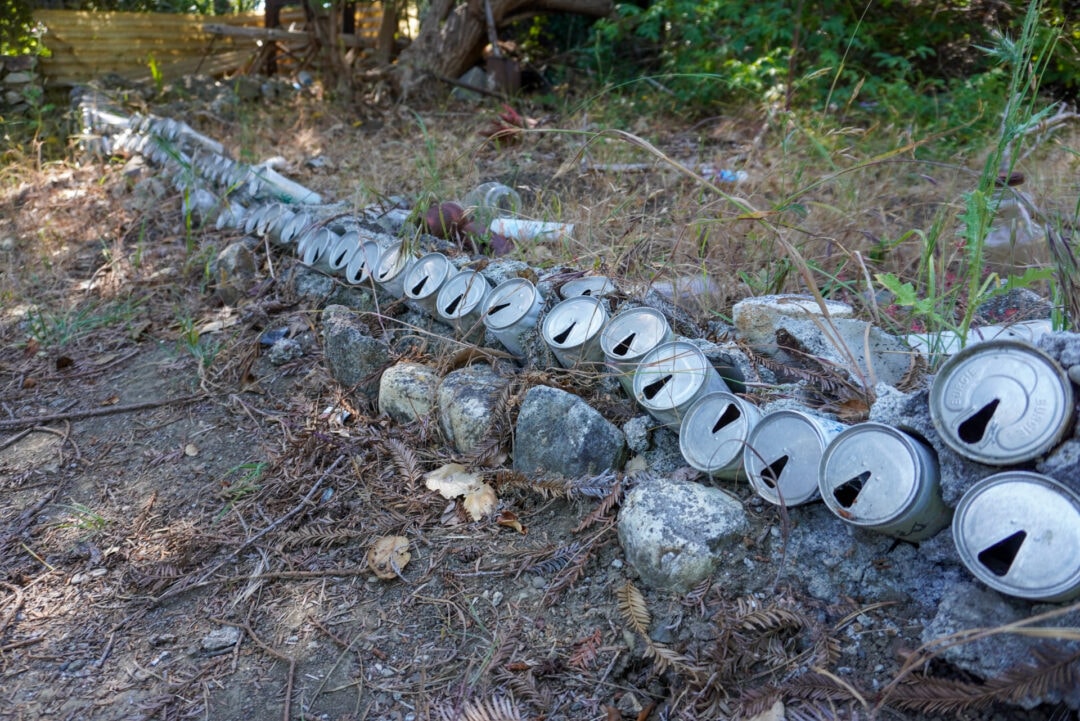
Beal and Hearst
After the tour ends and I’m back on Cambria’s Main Street, Nitt Witt Ridge starts feeling like a distant memory, something that doesn’t quite belong here—or anywhere. I order a slice of the signature olallieberry pie from Linn’s Restaurant, a Cambria staple since the 1980s, and contemplate two vastly different mansions in the area. Nitt Witt Ridge and Hearst Castle are located only 8 miles apart—but they exist in very different universes.
Together with architect Julia Morgan, newspaper magnate William Randolph Hearst spent decades building his extravagant, over-the-top estate on a hilltop overlooking the Pacific Ocean. Hearst decorated his palace with priceless pieces of art and antiquities, and it became a meeting place for the social and cultural elite of the time.
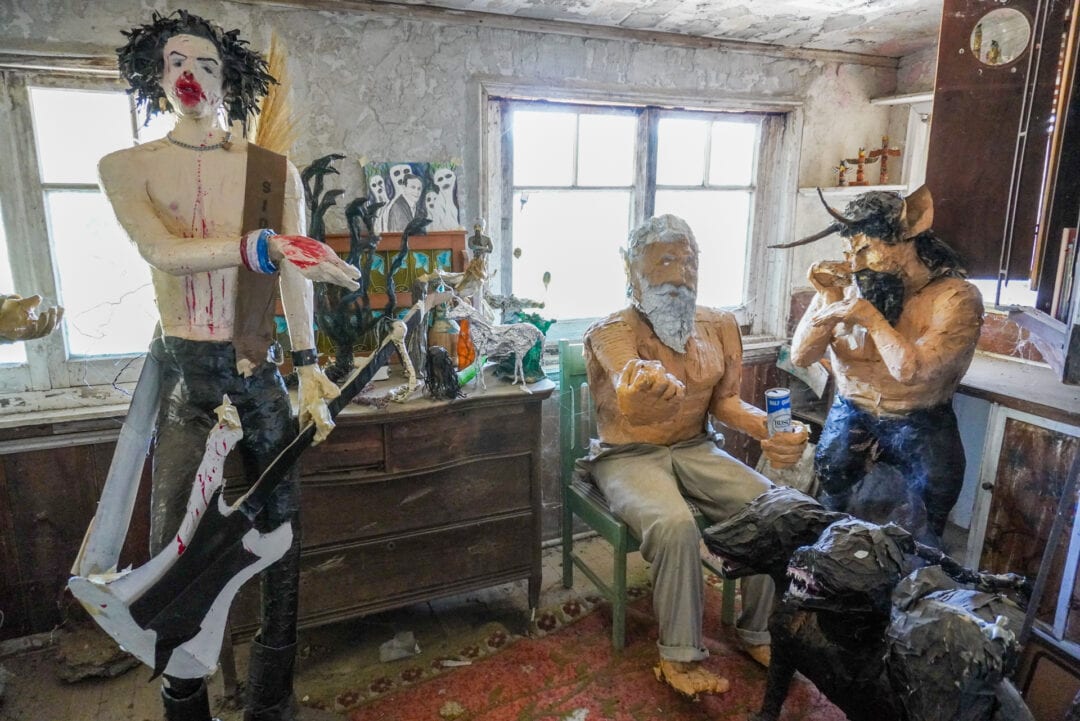
While Hearst Castle in many ways is the complete opposite of Nitt Witt Ridge—a house built using literal garbage—there are also many similarities between the two landmarks and their creators. Both Beal and Hearst were collectors, and they built their dream homes using items they’d spent years accumulating. Although their definitions of what constituted art might have differed, they were both passionate about their respective collections. And their unorthodox buildings have helped shape both of their legacies for generations to come.
There’s perhaps no better way to explain the allure of this stretch of Highway 1 than the fact that these two buildings are allowed to exist here side by side. It doesn’t matter whether you spend millions of dollars on the finest art money can buy, or buy (and drink) enough beer to use the cans as bricks—if you build something truly interesting, the people will come.
If you go
Nitt Witt Ridge is open for tours every hour on the hour between 10 a.m. and 4 p.m. most days, but call ahead to confirm: (805) 927-2690. A $10 donation is suggested. Parking is limited, there are no restrooms, and the house is not wheelchair accessible.


